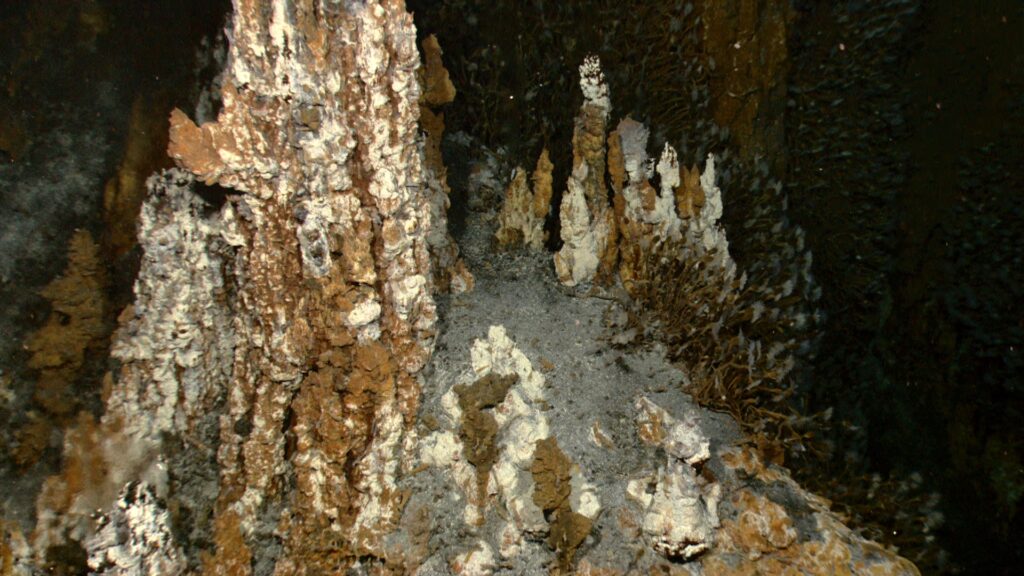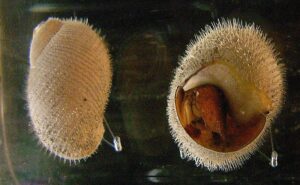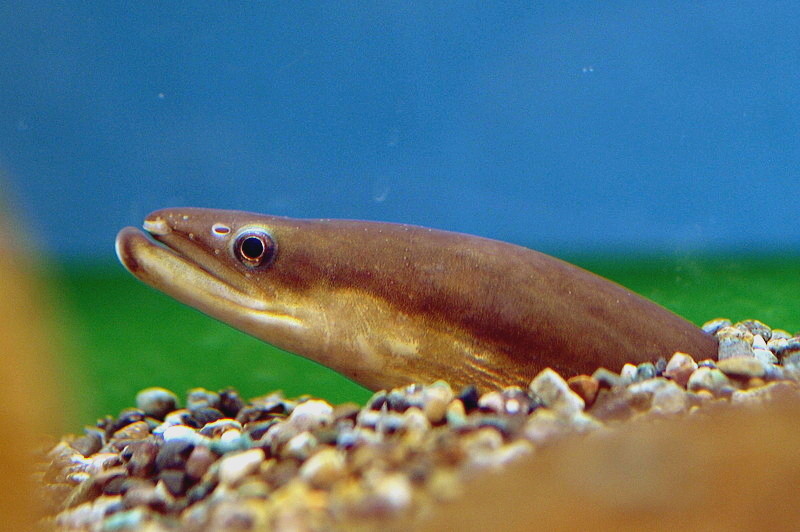Breusing, C., Genetti, M., Russell, S.L., Corbett-Detig, R.B., and R.A. Beinart. 2022. Horizontal transmission enables flexible associations with locally adapted symbiont strains in deep-sea hydrothermal vent symbioses. PNAS 119(14): e2115608119. https://doi.org/10.1073/pnas.2115608119
The deep sea often conjures images of an empty, barren seafloor, with little to no animal life. However, scattered along the bottom of the ocean are areas where life, somehow, finds a way. At hydrothermal vents, seawater that has seeped down into the earth’s crust comes up through cracks, mixing hot water and minerals with the surrounding colder deep ocean water. The chemical processes occurring here help to support bacteria, which in turn form symbiotic, or mutually beneficial, relationships with larger animals, such as tube worms, mussels, and snails. In these symbiotic relationships, the bacteria live in the larger host animal and use chemical energy to make organic matter, which the host then uses as food. In return, the bacteria likely have access to a stable environment.

But how do animals form these relationships with bacteria? Do they acquire their symbionts from the surrounding water (a method referred to as horizontal transmission), or do parents pass down the bacteria to their offspring (called vertical transmission)? Researchers from the University of Rhode Island set out to investigate how two different genera (or groups) of deep-sea snails, Alviniconcha and Ifremeria, obtain their bacterial symbionts. Snails were collected from six hydrothermal vent sites near Tonga, in the Pacific Ocean, in 2009 and 2016, and the scientists extracted the DNA from both the snails and their symbionts. They used information from the DNA to investigate whether a specific type of bacteria was only associated with one species of snail, and whether or not there was evidence that the snails were passing on symbionts from parents to offspring.

By comparing the mitochondrial DNA of the host snail with the DNA of the symbiotic bacteria, the researchers discovered that it is most likely that both groups of snails (Alviniconcha and Ifremeria) are getting their bacterial symbionts from the environment, through horizontal transmission, not from vertical transmission. If the bacterial symbionts were passed down from each generation of snails, there would have been evidence of similar DNA changes, which the scientists did not see. Furthermore, they found that bacteria closer to the vents were less closely related to bacteria further away from the vents, and that the type of bacteria the snails formed relationships with was a result of where the snails were living. Right at the opening of a vent the water is incredibly hot, and there are high concentrations of chemicals such as methane, sulfur, and hydrogen, but temperatures and concentrations of those chemicals decrease further away from the vent. Bacteria along this gradient are adapted to live in different types of environments, so it appears that the snails are taking advantage of whichever type of bacteria is present where they are. Without the bacteria providing organic matter, there wouldn’t be enough food for the snails to survive at such deep depths in the ocean.
The researchers concluded that the snails are forming symbiotic relationships with locally-adapted bacteria, allowing them to use those bacteria to obtain nutrients and survive in such a harsh environment. This information will help scientists understand how horizontal transfer of symbionts happens globally, and how these important relationships are formed. Because symbiotic relationships are common worldwide, there are likely more situations where animals can live in tough habitats by acquiring locally-adapted bacteria through horizontal transmission.
I’m a PhD student in Oceanography at the University of Connecticut, Avery Point. My current research interests involve microplastics and their effects on marine suspension feeding bivalves, and biological solutions to the issue of microplastics. Prior to grad school I received my B.S in Biology from Gettysburg College, and worked for the U.S Geological Survey before spending two years at a remote salmon hatchery in Alaska. Most of my free time is spent at the gym, fostering cats for a local rescue, and trying to find the best cold brew in southeastern CT.


